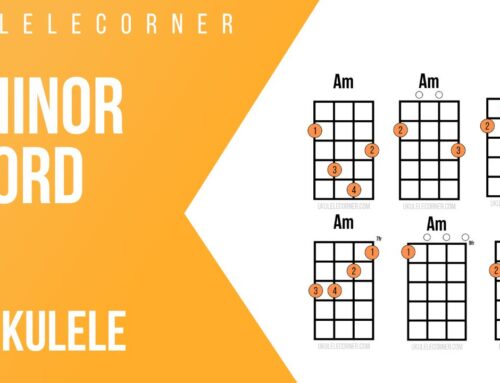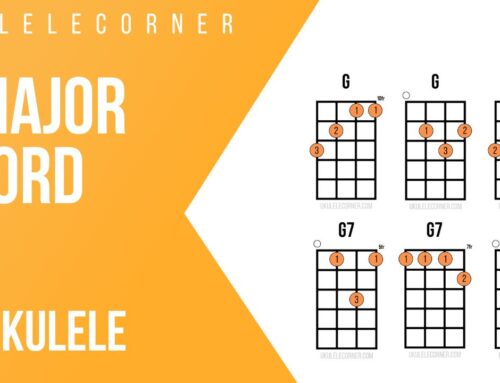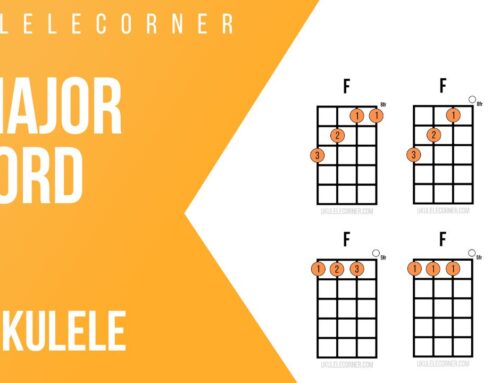In this article we’ll look closely at playing ukulele with amplification.
Playing Ukulele with Amplification
The ukulele is a beautiful acoustic instrument that can project a lot of sound without amplification but there are times when a bit more volume is needed to fill a large space or blend in with other amplified instruments. Using a microphone can work when placed near the body of the ukulele, but a pickup often gives more control and a cleaner signal for amplification. There are a few options for how you use a pickup and the type of amplification that you use. If you haven’t plugged your ukulele into a sound system or amplifier before, it can be a terrifying experience. So I want to share some ideas from my experiences over the years that can help you find a great sound and make playing this way a lot of fun.
Pickups
Many ukuleles now come with pickups installed. Most have a volume control and many also have tone/EQ control. If your instrument doesn’t have a pickup there are pickups that can be attached without needing to drill a hole for a quarter inch cable. I have tried a few of these but actually prefer to use a cable and have more permanent pickup setups installed in the instruments I perform with. I have used the LR Baggs Element and Five O pickups with great success and recommend either. The Five O uses the same technology as the Element but is designed for the ukulele and uses a small 2032 coin battery instead of a 9-volt which is used in the Element. I like the tone of these pickups as they give a natural sound and are not prone to feedback.
All pickups will start to produce feedback when the volume of the amplifier or PA system is turned up too high but the Element can handle more volume than most other pickups I have tried. Other great brands are Fishman and K & K. The K & K uses a sensor on the body of the ukulele under the top which gives a very natural sound but is more prone to feedback.
Sound Systems
The next thing to consider is what kind of sound system you will use to amplify your instrument. I often use an amplifier for small performances or even as a DI (Direct Input), which then is plugged into the main house sound system. After years of searching for the perfect amp, I found the amazing AER Compact 60. It has a very clear acoustic tone and makes the ukulele sound like it got bigger without becoming electric. Many amps are designed for electric instruments and do not produce a natural tone. The AER amps are expensive so you may prefer to start with a less expensive brand. Roland has a line of acoustic amplifiers that work well. The acoustic cube amp is very inexpensive and can run on batteries if needed.
Using an Amplifier
If you are plugging into an amplifier, start with the volume all the way down on both the amp and the ukulele if you have a volume knob with the pickup system. If there is EQ on the amplifier, start with it flat (set the EQ knobs to 5). Turn the volume up on the amp to about 1 then slowly turn the volume up on the ukulele as you start to play to test the sound. Playing at a low volume will get you acquainted with this new experience of playing plugged in. You can listen for the tone of the instrument through the amplifier. Is it shrill or thin sounding?
EQ
Most amps come with EQ controls built in. Turn the treble down to about 4 and the bass up to about 6. If there is a midrange control try dialing that back a bit as well. Inch up the volume to 2 or so and have fun playing some of your favorite songs to get comfortable with the amplified sound.
Reverb
Your amp may have Reverb. Try turning this up to about 5 or 6. It creates a wonderful ambience like you are playing in a large hall creating more sustain. It can also take the edge off that harsh amplified sound which will make playing more comfortable. Over time you can experiment with all sorts of EQ and reverb settings to see what you prefer. I sometimes add more reverb for slower ambient songs and less for uptempo songs. For EQ I generally prefer a warm tone over a bright sound but you will find your own favorite settings.
Feedback
As you start increasing the volume, there will be a point when the instrument starts to feedback. Perhaps if you play the open 3rd string you will notice a swell in volume that won’t stop until you mute the string. This swell can build to a frenzy with the amp screeching if not stopped. It is good to get a feel for where this volume limit is and stay below it. Often changing the EQ can help to lower feedback. Graphic EQ settings can allow you to find exact pitches and frequencies that feedback but often amplifiers only have bass, midrange, and treble settings.
Large Sound Systems
After you get comfortable using an amplifier, the big jump to playing through a large sound system at a concert hall, outdoor setting, or just at a jam session with friends will be much less scary. You will have the feel for the change from acoustic to amplified sound and can start with your volume low on the ukulele and slowly increase it to a comfortable level. There is an added level of complexity here because the signal from your instrument will run through a DI to a mixing board with its own setting and controls.
There may be a sound engineer running the board or you may be on your own to figure out how to get the sound just right. Just as you did with the amplifier, start with the sound very low and gradually increase it to a comfortable level. You will often not have any control over the volume, EQ, and reverb settings in the mixing board so plugging in with your volume on the instrument off is essential. I have had feedback through the monitors countless times when forgetting to do this!!! Not good for your ears. . .
Using Monitors
If you are using monitors start with the monitor volume low as well then gradually increase it to the desired volume. In smaller settings, you may be close enough to the mixing board to plug directly in like you would through an amplifier. Mixing boards have separate channels for each input so you can choose an input and learn where all the volume, EQ, reverb, mute, and monitor controls are. Ask a friend to give you a tour of the mixing board if you are not familiar with it.
Using a DI: Direct Input
Having a great sound person running the board can make performing amplified a wonderful experience but you can’t always rely on this. One thing that will give you more control over your sound is to have your own DI with volume, tone controls, boost, and mute controls. LR Baggs also has a line of great DIs which I have used often. The Venue is the most advanced DI with a tuner, many EQ controls, boost for solos, and other features. Fishman has many excellent DIs to choose from as well. I also like to use a reverb pedal and found the sound I prefer with the EarthQuaker Dispatch Master Reverb/Delay pedal. Some reverb pedals change the tone of your ukulele but this pedal preserves the original tone with amazing sounding reverb and delay.
***
When you play amplified you will immediately notice that not only the volume of the intended notes increases but everything else gets louder as well including unwanted string noise, buzzing notes, and even taps on the sound board or fingerboard. Playing amplified and a low volume to start with will allow you to find ways to control your sound and tone and will help you play better acoustically. Before you know it you will see the great benefits of amplification and will understand how to get the sound you prefer out of your ukulele when plugged in. This will make you feel much more confident and comfortable when performing for an audience or with a group at a kanikapila jam session.




Thanks for the information Jeff. I’ve always been curious about getting a uke with a pick up but have been hesitant because the technology is changing sooo fast I was concerned that it would become outdated quickly. Years ago I spent a small fortune on an electric accordion, which quickly became outdated, so now I’m gun-shy, and for that reason I think I’d lean towards the non-permanent variety. Good information.
I’m happy to be on your mailing list. This blog post is just what I needed. Exactly what any “newbie” to amplification needs to consider, to know, and to have to put it all together. Mahalo Jeff, for offering such information so generously.